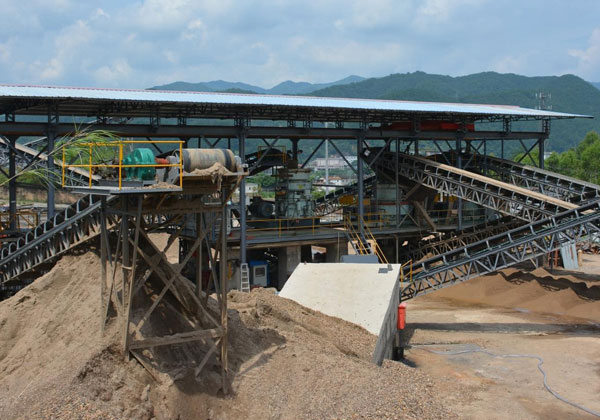A sand and gravel crushing and screening project is designed to process raw materials (sand and gravel) into usable construction aggregates. This project typically involves multiple stages of crushing, screening, washing, and sometimes sorting. The purpose is to produce high-quality aggregates that meet the specific demands of various construction applications, such as road building, concrete production, and landscaping.
Project Overview
The primary objective of a sand and gravel crushing and screening project is to produce a range of aggregate materials, including fine sand, coarse gravel, and crushed stone, with precise gradation and particle size distribution. These materials are crucial for producing concrete, asphalt, roadbase, and other construction materials. The project might also involve the production of specialized aggregates, such as washed sand or crushed stone for specific purposes.The main objectives of the project are to:
- Crush the raw materials to reduce their size and make them suitable for specific uses.
- Screen the crushed materials to separate fine particles from coarse ones.
- Wash the aggregates to remove impurities like clay, silt, or dust.
- Sort the materials based on size to create different grades of aggregates.

Crushing and Screening Stages
The crushing and screening process is usually divided into multiple stages to achieve the desired material size and quality.
- Primary Crushing: In this stage, large boulders are fed into primary crushers such as jaw crushers or impact crushers. These machines break down the raw material into medium-sized aggregates that are easier to handle. Primary crushers are often capable of handling the largest sizes of raw materials.
- Secondary Crushing: After primary crushing, the material is passed to secondary crushers like cone crushers or impact crushers. These crushers further reduce the size of the material to smaller, uniform particles suitable for various applications. The secondary crushing stage can also include a finer screening process to separate any further oversized material.
- Screening: Screening is the process of separating crushed materials based on size. This can be done with vibrating screens, which separate materials into different grades. For example, fine materials (sand) are separated from coarse aggregates (gravel or larger stones). The screens may also classify the materials by size for different construction applications, such as using fine sand for concrete or larger gravel for roadbase.
- Washing: In many cases, the aggregates need to be washed to remove impurities like dust, clay, or silt. This is particularly important for materials used in concrete production, as clean aggregates improve the strength and quality of the final product. Sand washing plants use water to wash aggregates and separate unwanted particles. This stage is important to ensure the quality and consistency of the aggregates.
- Sorting: After washing, the material is often sorted into specific grades based on size. This is done using additional screens or sorting machines that separate materials into categories such as fine sand, coarse sand, and various gravel sizes. The sorted materials are then ready for use in construction projects.
Equipment and Machinery
A typical sand and gravel crushing and screening project requires specialized equipment, including:
- Jaw crushers for primary crushing
- Cone crushers or impact crushers for secondary crushing
- Vibrating screens for sorting and separating materials
- Washing plants for cleaning aggregates
- Stackers and conveyors for material handling
A sand and gravel crushing and screening project is an essential component of the construction industry, producing aggregates needed for various infrastructure and building projects. By employing advanced crushing, screening, and washing technologies, the project ensures the production of high-quality aggregates. Such projects contribute significantly to the construction industry by providing essential materials for infrastructure development.
